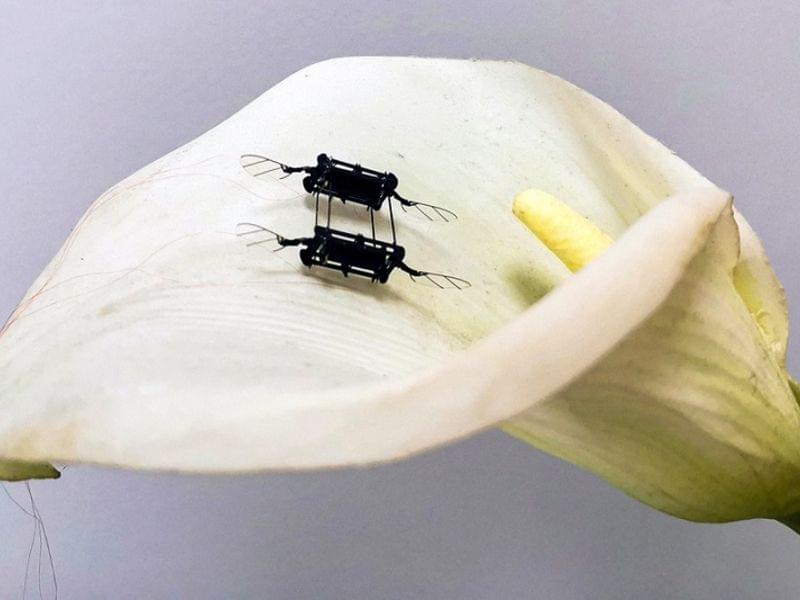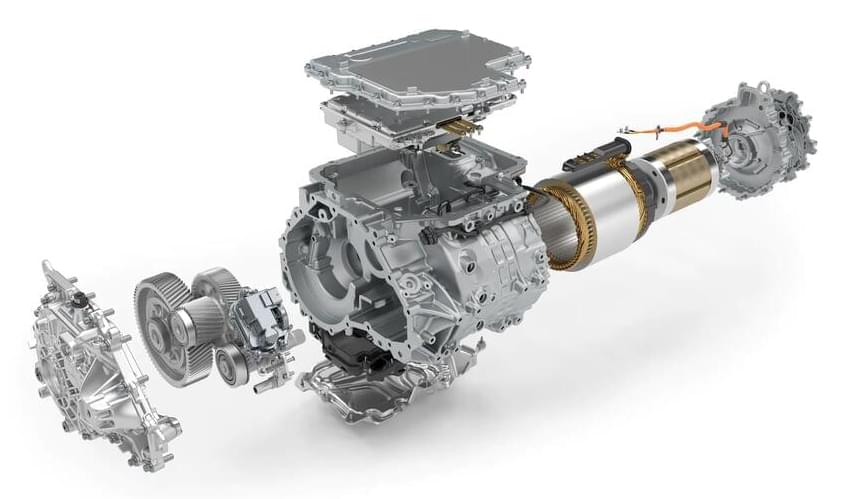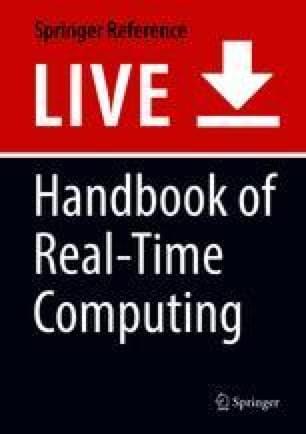Supernovae and black holes, although they surprise scientists, are gradually being studied and recorded. Scientists are much more concerned with strange places in the Universe, which are difficult to explain by the laws of physics and nature we know. The Bootes Void is one such place. It is not considered to be emptiness by chance – there is absolutely nothing in it. Astronomers for a long time could not believe their own eyes, because in a colossal area of 300 million light years there was not a single galaxy or star. Solid blackness extends over unimaginable distances. Like anomalien.com on Facebook…
CAMBRIDGE, Mass.—Massachusetts Institute of Technology researchers have reported a potentially significant advance with the development of microdrones, equipped with wings powered by artificial muscles in the form of elastomer-based actuators.
The development, claims MIT, could pave the way for futuristic applications, for example, swarms of the insect-sized robots that pollinate fields of crops or search for survivors buried in collapsed buildings.
Key to the innovation is a novel fabrication technique that builds actuators with a hugely extended component lifespan and increases the robot’s performance and payload compared to existing models.
Amplifying the longevity biotech space with exciting opportunities and brand-new starts. It’s all about connections!
It’s a magnet-less motor, but how does that work, why is it significant, and a bit old school? We take a deep dive into the motor powering the BMW iX M60.
Sixty-nine percent of global enterprises have already adopted or plan to adopt quantum computing in the near term, according to a new survey of enterprise leaders commissioned by Zapata Computing. The findings suggest that quantum computing is quickly moving from the fringes and becoming a priority for enterprise digital transformation, as 74% of enterprise leaders surveyed agreed that those who fail to adopt quantum computing will fall behind.
Broken down further, 29% of enterprises worldwide are now early adopters of quantum technology, while another 40% plan to follow in their footsteps in the near future. Adoption thus far is highest in the transportation sector, where 63% of respondents reported being in the early stages of quantum adoption. This may be a reaction to the ongoing supply chain crisis, which quantum could help relieve through its potential to solve complex optimization problems common in shipping and logistics.
Among early adopters, 12% expect to achieve a competitive advantage with the technology within one year, while another 41% expect an advantage within two years. The findings suggest confidence among enterprise leaders that quantum computing is no longer a distant reality, but a near-term opportunity. Machine learning in particular was cited as the top near-term use case for quantum computing.
Designed and built by LEGO creator Mr. Platinum using 2,800 LEGO Technic pieces, this absolutely delightful mini replica of the DMC DeLorean from Back To The Future comes complete with a detailed exterior as well as interior, functioning doors, glowing lights, and a Bluetooth controller that lets you remotely drive the little car around!
The video above is a mashup of scenes from the original Back To The Future movie showing the DeLorean’s reveal, combined with video snippets of Mr. Platinum’s highly detailed build. The LEGO DeLorean is a stunning MOC (My Own Creation) that boasts of functioning headlights and taillights, glowing pipes around the car’s periphery as well as on the inside, motorized doors that open on command to reveal the detailed interiors, and for good measure, repositionable tires that become horizontal to resemble the car flying through space and time. If there ever was a near-perfect LEGO DeLorean build, this 2800-brick masterpiece is clearly it.
Designer: Mr. Platinum
Olipa Elisa said her 10-year-old son used to have to hike 5km (3 miles) every day to the nearest school, often arriving late and exhausted.
“I am very excited that we now have a school closer to my home, and my child will not have to take the long journey,” said Elisa, 38. “What we need is more of these learning blocks to accommodate other classes.”
Run by 14Trees, a joint venture between Swiss cement manufacturer LafargeHolcim and British development finance agency CDC Group, the project was faster, cheaper and less energy-intensive than conventional construction, said 14Trees managing director Francois Perrot.
Investigated by the SOAR Telescope operated by NOIRLab, the binary system is the first to be found at the penultimate stage of its evolution. Using the 4.1-meter SOAR Telescope in Chile, astronomers have discovered the first example of a binary system where a star in the process of becoming a white.
MIT physicists and colleagues have discovered the “secret sauce” behind some of the exotic properties of a new quantum material that has transfixed physicists due to those properties, which include superconductivity. Although theorists had predicted the reason for the unusual properties of the material, known as a kagome metal, this is the first time that the phenomenon behind those properties has been observed in the laboratory.
MIT physicists and colleagues have discovered the “secret sauce” behind some of the exotic properties of a new quantum material that has transfixed physicists due to those properties, which include superconductivity. Although theorists had predicted the reason for the unusual properties of the material, known as a kagome metal, this is the first time that the phenomenon behind those properties has been observed in the laboratory.
“The hope is that our new understanding of the electronic structure of a kagome metal will help us build a rich platform for discovering other quantum materials,” says Riccardo Comin, the Class of 1947 Career Development Assistant Professor of Physics at MIT, whose group led the study. That, in turn, could lead to a new class of superconductors, new approaches to quantum computing, and other quantum technologies.
The work is reported in the January 13, 2022 online issue of the journal Nature Physics.
Satellite Communication Networks
Posted in computing, satellites
My Chapter Titled ‘’, has been published in ‘Handbook of Real-Time Computing’ in Springer Nature. The chapter provides information on satellite communication networks for different orbits, use-cases, scenarios, link budget analyses, history, and future developments.
Software-defined radio (SDR) is one of many new technologies being adopted by satellite communication to lower the costs both operational and capital by reducing the amount of radio equipment involved in the communication chain and by giving the advantage of remote configuration and regular firmware updates. SDR basically replaces most of the radio equipment by a single computing device with software capable of performing functions of the replaced hardware equipment. SDRs are introduced not only in terrestrial gateways and ground stations, but next generations of LEO and GEO satellites are already adopting the technology. Previously, satellite radio links were limited to the configuration of radio equipment that was installed during the manufacturing of the satellite, which couldn’t be modified throughout the lifespan of the satellite.
Figure 15 displays a generic digital communication transmit and receive RF chain at the physical layer for binary, sampled, and analogue data streams. Data in binary that is collected from data source at transmit end is coming from the higher layers, which is then coded in binary, modulated to sampled, converted to analogue waveform through digital to analogue converter before sending it to the antenna end for transmission over-the-air interface with required transmit power. At the receive end, the wireless signal is received as analogue, converted to sampled for demodulation, decoded to binary, and sent to data sink for integrating with upper layers. The coding/decoding and modulation/demodulation, commonly referred to as MOD/COD, are programmable functions and can be replaced by SDR using a processing device. This can be done at the ground stations, at the gateway, user terminals, and at the satellite using on-board processing.









